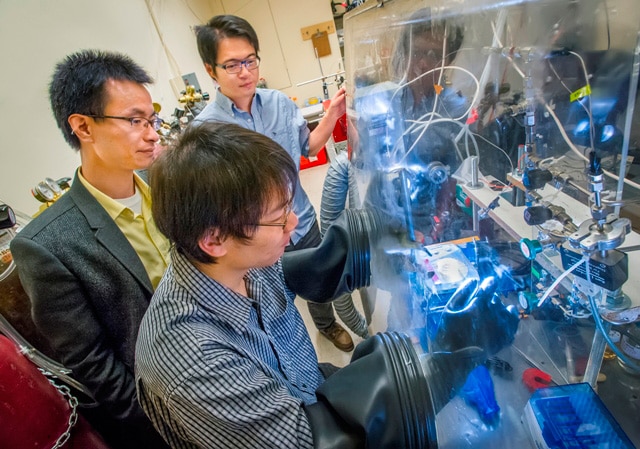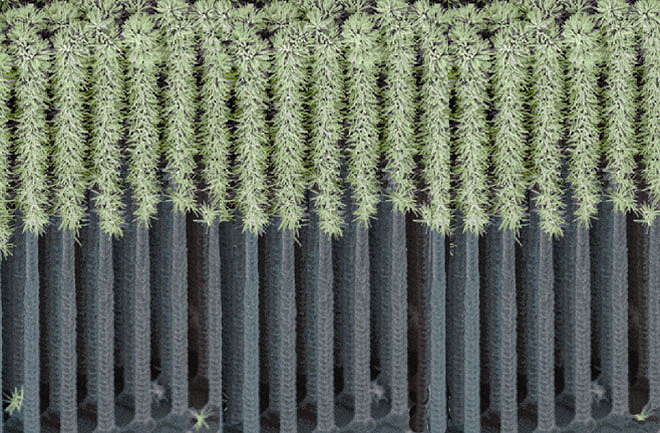Today on Discovery News, I read that one hour of global sunlight contains enough energy to meet the demands of every human on the planet for an entire year. That’s incredible to me. If we can somehow learn how to convert the power of that energy into a format to power our lives, we could make huge progress when it comes to nurturing our planet and our environment. Researchers recently developed a fake forest, and it can convert solar energy into chemical fuels.
According to the Lawrence Berkeley National Laboratory website, “Berkeley Lab researchers have created the first fully integrated artificial photosynthesis nanosystem. While ‘artificial leaf’ is the popular term for such a system, the key to this success was an artificial forest.”
The process of artificial photosynthesis, which is the process of converting solar energy into chemical fuels, is an exciting science and one of the most promising solar technologies. According to the researchers’ article, the most challenging part of the process is doing this for the same amount of money or less than the fossil fuel system. That is why this integrated artificial forest is so significant. It can take in the sunlight and then produce charge-carries to drive separate water reduction and oxidation half-reactions.
By mimicking the photosynthesis process, this artificial forest can generate oxygen and hydrogen by using the sunlight. Those gases can be used to power fuel cells. This turns the solar energy into chemical fuels. Although this system is an groundbreaking discovery, it is not ready for commercialization quite yet. Currently this system only has a 0.12 percent solar-to-fuel efficiency. Once these researchers are able to improve that percentage to make it more efficient, we could start seeing fake forests full of fake tress around the world.


COMMENTS